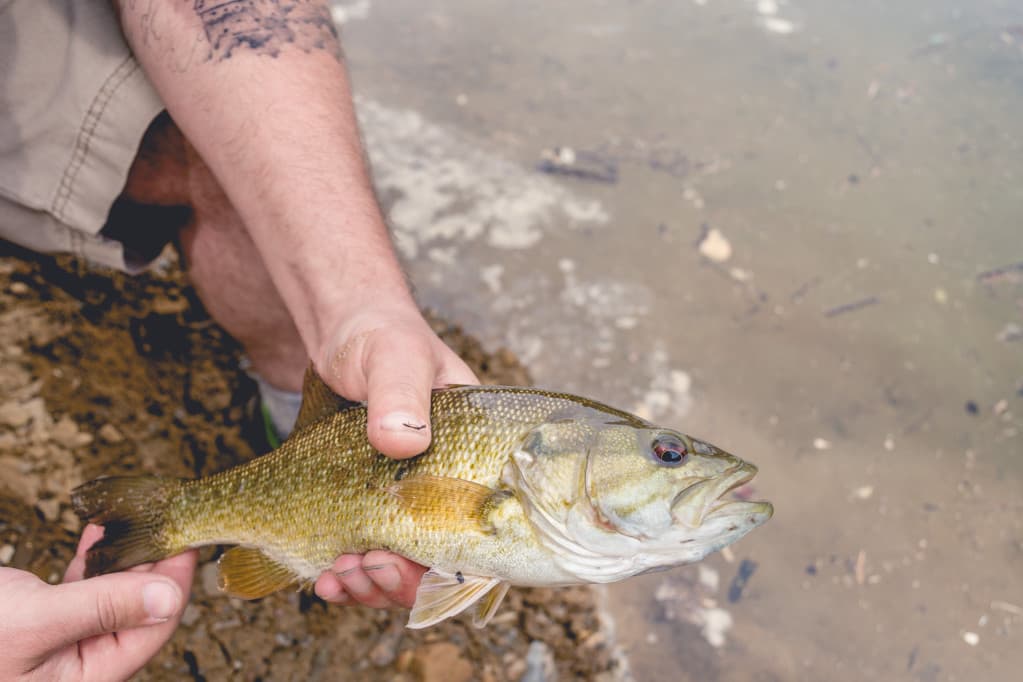How To Fillet A Fish | Expert Guide To Preparing Your Catch For Dinner
How to Fillet a Fish Successfully
Straight forward guide to properly filleting a fish
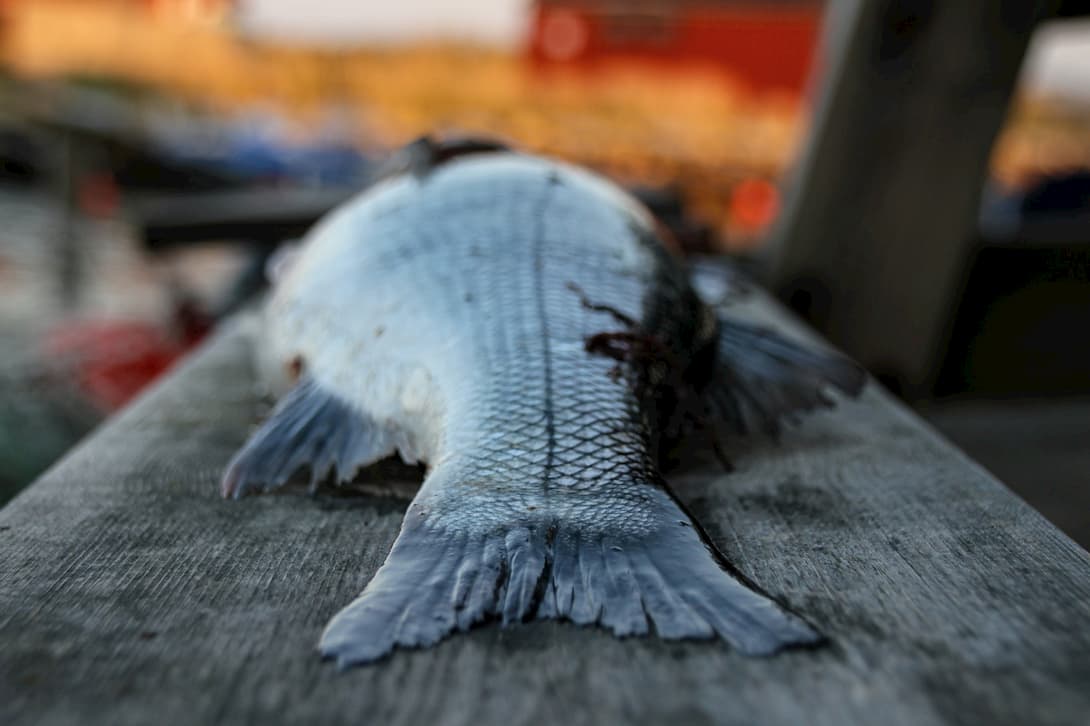
A lot of people like to fish. It doesn’t matter if it’s done for professional reasons or just to relax. The good thing about fishing is that it is not only a good form of relaxation, but if you know what you’re doing, you can also catch a mess of fish and grill it up before the sun goes down.
Although you could probably grill the whole fish, consider filleting it. If you don’t know how to fillet a fish, don’t worry. We’re going to explain how it’s done in this simple guide.
You may not learn how to do it correctly the first time, but just like with anything else, it takes practice. Follow the next few easy steps. You should be knowledgeable on how to fillet a fish in no time.
1. Make sure your work area is clean and sanitized
Before you start filleting your fish, make sure your work area is clean. This is very important for any type of food preparation, but it is especially important when handling fish.
When fish is exposed to bacteria, it can spoil fairly quickly. Don’t work in a dirty area which can increase food poisoning risks.
2. Use the proper tool
A sharp fillet knife is essential, but use it carefully. Keep the knife sheathed when not being used and always make cutting motions away from you and others.
If you’re looking for a great fillet knife, check out our review of the 9 best fillet knives on the market.
Now that we have this safety lesson out of the way, let’s start on the steps of how to fillet a fish.
3. Bleed out the fish
Start the bleed out process the minute the fish is caught. This is just a matter of making a little incision under the gill. Then snap the head back so that the spine is severed. Thread a piece of string or rope through the gills.
This bleeds the fish out, which is very important. Performing this step will make the fish taste better. Also, if you get rid of the blood before you start to fillet the fish, your work area will stay cleaner.
4. Put the fish in ice
5. Take the scales off the fish
You can either get rid of the scales now or completely remove the fish skin later. If you want to remove the scales first, just use a knife to scrape off the scales. Start at the tail and work your way up to the head.
When scraping, remember you’re not cutting, but taking the edge of the knife and dragging it vertically against the scales of the fish.
6. Filleting the fish
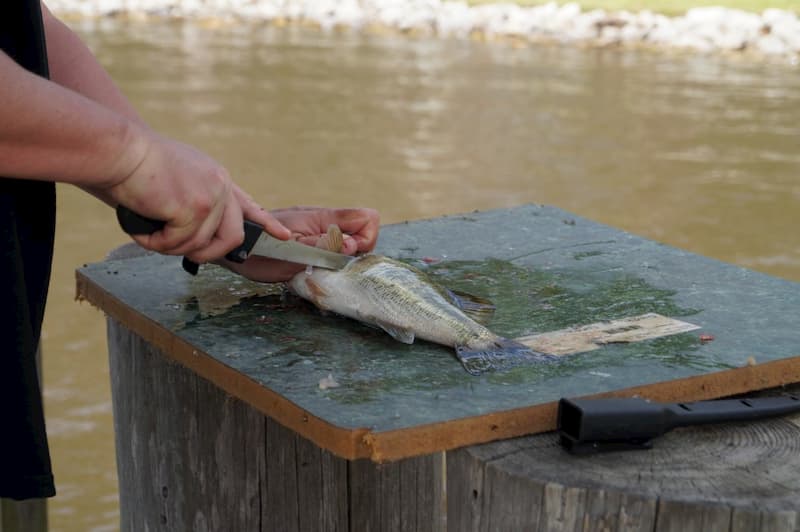
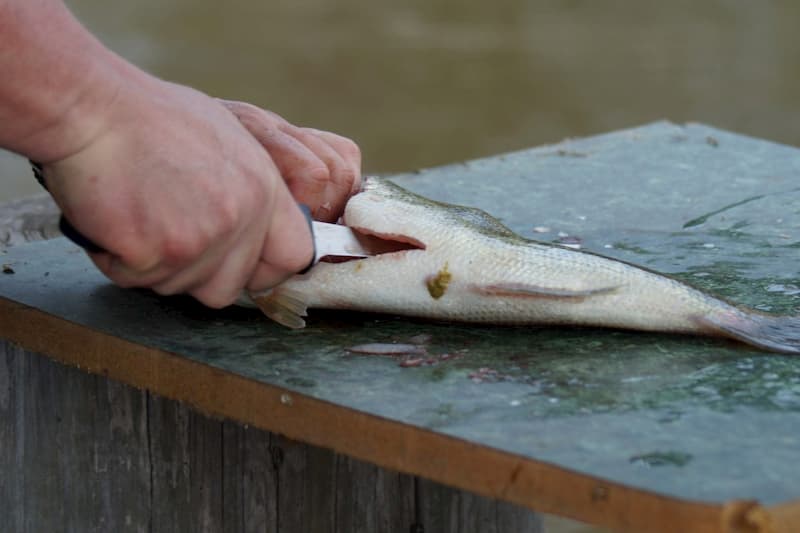
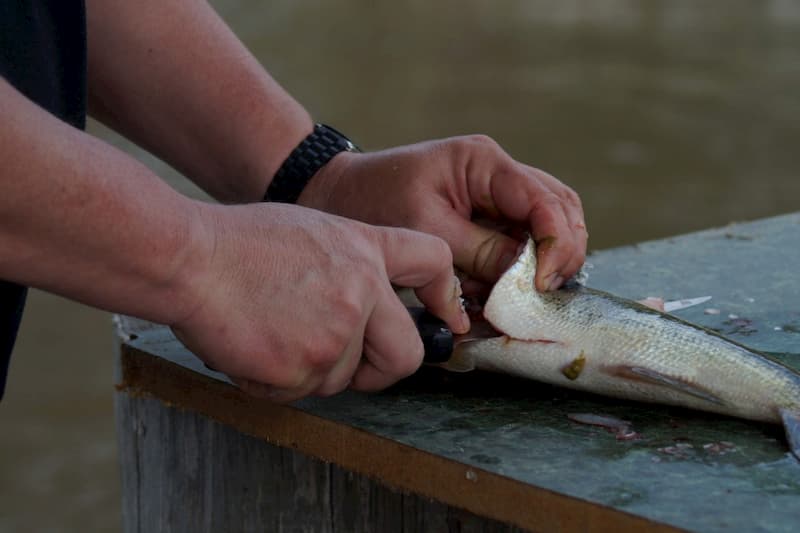
Now, we are ready to actually fillet the fish. Your knife has to be extremely sharp for this step.
Start by placing your knife directly behind the gill and make a cut from the back of the head at the spine to the belly of the fish. Cut through to the spine.
Next, make a shallow cut along the spine from the head to a point just before the tail fin. Cut to the side of the dorsal fin. Then slowly, using short strokes, follow this same path making repeated cuts downward to separate the fillet from the ribs. Fold back the fillet as you cut and allow the point of the knife to follow the contour of the rib bones.
If done properly, you will cut around the stomach and intestines. This will cut down on the mess and the follow-on clean-up process. Once you reach the belly area of the fish, finish the fillet by cutting through the skin.
7. Repeat on the other side of the fish
Once you’ve cut the first fillet, do the same thing for the other side of the fish. Unfortunately, the other side will be more slippery since the first side is no longer there. In addition, the second side probably won’t be as bulky and much harder to hold on to.
This is another reason why you should ensure that the first fillet is done properly. Any mistake on the first fillet will just make it harder to cut the second fillet.
Remember to take your time and work slowly.
8. Inspect the fillets and get rid of the bones
No one wants to eat fish that has bones in it. Make sure that you’ve taken out all of the bones. Do this with either a boning knife or a set of tweezers.
Throw away the bones.
9. Take the fish skin off
Although some people like to eat fish skin, others don’t. If you do not like to eat the skin, remove it with the fillet knife.
First, lay the fillet skin down. Starting at the tail of the fillet, lay the knife flat and begin cutting where the skin meets the meat. Continue to move through the remainder of the fillet.
Take your time to remove the skin by grasping the skin and running the knife between it and the meat.
10. Get rid of the fish fat
11. Rinse the fish off
Next, put the fish under cold running water in order to get rid of bacteria or other things that may have remained.
At this point, the fish is prepped and ready to cook. You can put it on the grill for tonight’s dinner or put it in the freezer or refrigerator for a later time. It can last in the freezer for about three months.
If it is put in the refrigerator, it will remain fresh for two days. But make sure that it is kept on ice.
Closing and Final Thoughts
There is nothing like spending the day fishing and relaxing at your favorite water hole. It is a great way to enjoy nature and have fun with family or friends.
But it is even better when you catch a few prize fish to show your fishing skills. The good thing is that you can either throw it back into the water or sit by the water’s edge to clean and fillet your beloved catch to throw on the grill.
It does not matter if you have fished for years or are just a beginner. Learning how to fillet a fish isn’t hard to do. Hopefully, this fishing guide can help.
You Might Also Like

11 Best Fishing Reels for Freshwater & Saltwater Angling 2022
Combo rod and reals are great for getting your feet wet into fishing, but for the best setup we recommend getting a real designed for the type of fishing you love to do most. Check out our review of the 11 best fishing reels on the market today.

Garmin Striker 4 Review | Best Fish Finder GPS Combo with Transducer 2022
It’s unbelievable how much more enjoyable fishing is when you have a good fish finder. The cherry on top? When that fish finder is priced like the Garmin Striker 4. Check out our review to see if this powerful little device is for you!
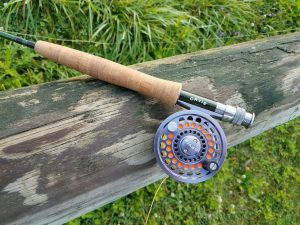
Orvis Clearwater Review – Best Fly Fishing Rod & Reel For The Money 2022
Ready to get started with fly fishing? The Orvis Clearwater fly fishing outfit is a great budget conscious rod and reel. Check out our review and see if this is the right fly fishing gear for you.

Humminbird Helix 7 Review | Amazing Chirp & GPS Fish Finder
Are you ready to always come home with a great catch after a day out on the boat? If so, the Humminbird Helix 7 fish finder is the device you need for your next fishing trip.


